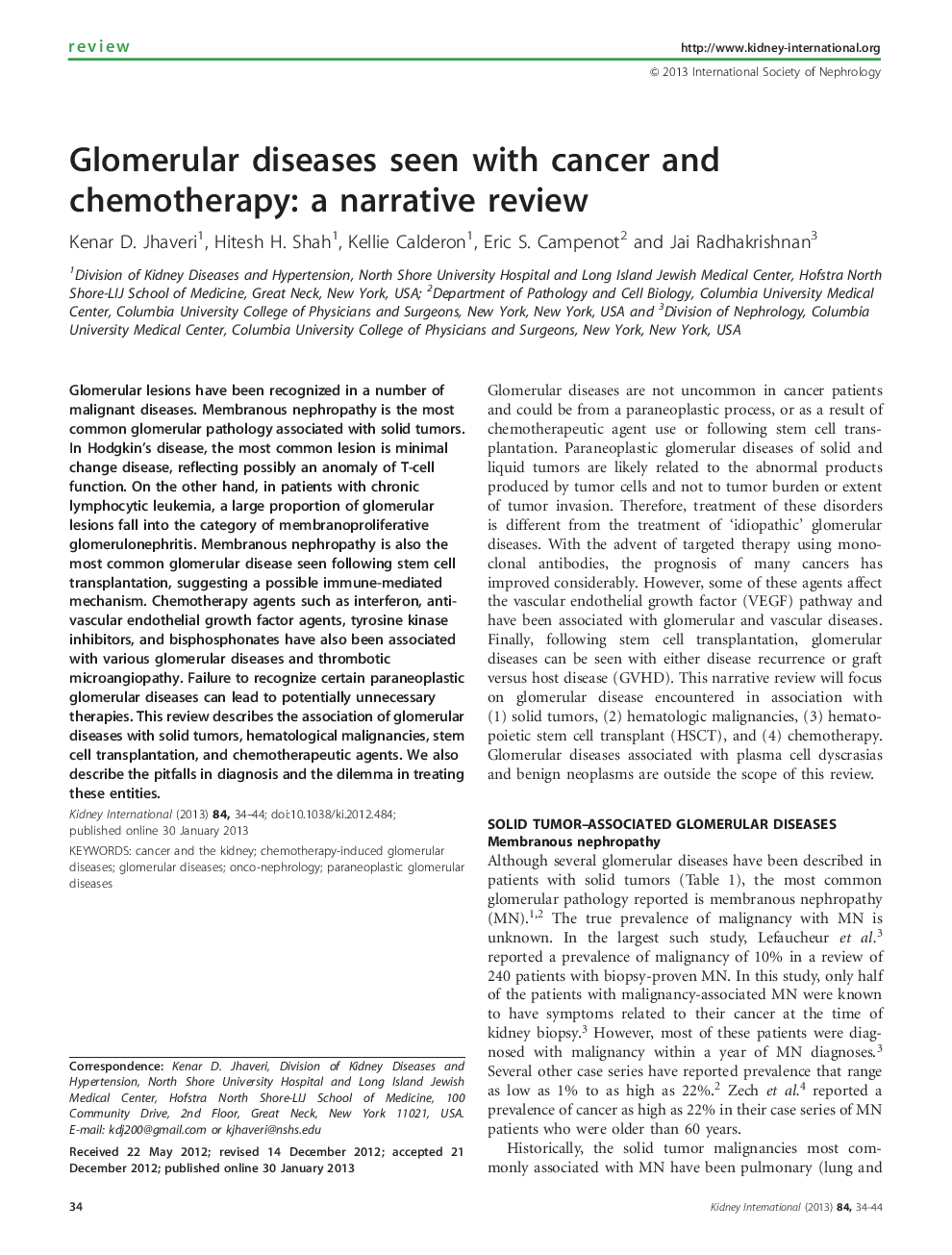| Article ID | Journal | Published Year | Pages | File Type |
|---|---|---|---|---|
| 6160992 | Kidney International | 2013 | 11 Pages |
Abstract
Glomerular lesions have been recognized in a number of malignant diseases. Membranous nephropathy is the most common glomerular pathology associated with solid tumors. In Hodgkin's disease, the most common lesion is minimal change disease, reflecting possibly an anomaly of T-cell function. On the other hand, in patients with chronic lymphocytic leukemia, a large proportion of glomerular lesions fall into the category of membranoproliferative glomerulonephritis. Membranous nephropathy is also the most common glomerular disease seen following stem cell transplantation, suggesting a possible immune-mediated mechanism. Chemotherapy agents such as interferon, anti-vascular endothelial growth factor agents, tyrosine kinase inhibitors, and bisphosphonates have also been associated with various glomerular diseases and thrombotic microangiopathy. Failure to recognize certain paraneoplastic glomerular diseases can lead to potentially unnecessary therapies. This review describes the association of glomerular diseases with solid tumors, hematological malignancies, stem cell transplantation, and chemotherapeutic agents. We also describe the pitfalls in diagnosis and the dilemma in treating these entities.
Keywords
Related Topics
Health Sciences
Medicine and Dentistry
Nephrology
Authors
Kenar D. Jhaveri, Hitesh H. Shah, Kellie Calderon, Eric S. Campenot, Jai Radhakrishnan,
